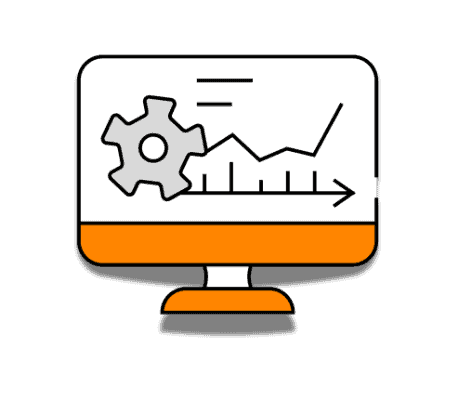How to Choose the Right ERP Software for Your Business Needs

Table of Content
Understand Your Business Requirements
Determine Your Budget
Decide Between Cloud and On-Premise ERP
Assess Vendor Reputation and Support
Evaluate Integration Capabilities
Ensure Scalability
Request Demos and Trials
Consider Implementation and Training
Analyze Total Cost of Ownership (TCO)
Start Small and Expand
Conclusion
Selecting the right Enterprise Resource Planning (ERP) software is one of the most critical decisions for a growing business. ERP systems integrate and streamline various business processes, such as accounting, supply chain, human resources, and customer relationship management. However, with so many ERP options available, it can be overwhelming to determine which one best suits your business needs. This guide will walk you through the essential steps to make an informed decision.
Understand Your Business Requirements
Before diving into ERP solutions, take the time to evaluate your business’s unique needs and challenges. Consider the following questions:
- What processes need improvement?
- Which departments will use the ERP system?
- What specific features or modules are essential (e.g., inventory management, payroll, CRM)?
Create a detailed list of must-have features and prioritize them. This clarity will help you focus on ERP solutions that align with your goals.
Determine Your Budget
ERP software costs can vary significantly, ranging from affordable solutions for small businesses to enterprise-grade systems with high upfront and ongoing costs. Define your budget early, including implementation, licensing, training, and maintenance costs. Remember, while it’s tempting to choose the cheapest option, investing in a robust system that meets your needs will pay off in the long run.
Decide Between Cloud and On-Premise ERP
ERP systems come in two main deployment models: cloud-based and on-premise.
- Cloud ERP: Hosted online, offers accessibility from anywhere, lower upfront costs, and regular updates. Ideal for businesses seeking scalability and flexibility.
- On-Premise ERP: Installed locally on your company’s servers, providing greater control and customization. Suitable for businesses with stringent security or compliance requirements.
Evaluate the pros and cons of each based on your infrastructure, data security needs, and budget.
Assess Vendor Reputation and Support
Choosing the right vendor is just as important as selecting the right software. Research vendors thoroughly and consider these factors:
- Track record in your industry
- Customer reviews and testimonials
- Availability of ongoing support and training
- Responsiveness to queries and issues
A reliable vendor should act as a long-term partner, helping you optimize your ERP system as your business evolves.
Evaluate Integration Capabilities
Your ERP system should seamlessly integrate with your existing software, such as accounting tools, CRM platforms, and e-commerce systems. Integration ensures smooth data flow across all departments and reduces the risk of data silos. Ask vendors about API capabilities and compatibility with third-party applications.
Ensure Scalability
As your business grows, your ERP system should grow with it. Look for a solution that can accommodate increasing data volumes, additional users, and new functionalities. Scalability is essential to avoid the need for costly upgrades or system replacements in the future.
Request Demos and Trials
Never commit to an ERP solution without seeing it in action. Request demos or free trials from shortlisted vendors to evaluate:
- User interface and ease of use
- Performance and speed
- Customization options
- Specific features that match your requirements
Encourage key stakeholders and employees to participate in the trial phase to gather diverse feedback.
Consider Implementation and Training
ERP implementation can be complex and time-consuming. Discuss the implementation timeline with vendors and assess their support during this phase. Additionally, ensure they provide adequate training for your team to maximize system adoption and efficiency.
Analyze Total Cost of Ownership (TCO)
Beyond the initial purchase price, consider the long-term costs of the ERP system. These include:
- Licensing fees
- Customization charges
- Maintenance and support costs
- Costs for adding new users or modules
Calculating the TCO will give you a realistic understanding of the financial commitment involved.
Start Small and Expand
If you’re uncertain about committing to a full-scale ERP system, consider starting with a modular approach. Implement the most critical modules first, and expand as your confidence and requirements grow. This strategy reduces risk and ensures smoother adoption.
Conclusion
Choosing the right ERP software is not just about picking the most popular or feature-rich solution; it’s about finding the one that aligns with your business’s unique needs, goals, and growth trajectory. By following the steps outlined in this guide, you can confidently select an ERP system that will streamline your operations, boost productivity, and set your business up for long-term success.